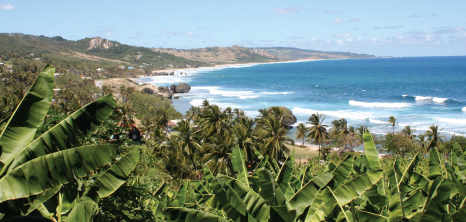|
Poisonous PlantsMany of the well-liked houseplants and some of the wild plants on the island of Barbados have the highest percentage of poisons found in them. Though not all are fatal, they can still bring about serious digestive problems, pain and discomfort. In some instances, some sections of a plant may be toxic, while other sections may very well be non-toxic. Of particular importance to note is that there may be one family of plants that is toxic, so caution should be taken with regards to any other plants within that particular family as they too, may very well be toxic.
We've listed a few poisonous plants that can be found on the island of Barbados.
The red and black seeds of the crab eye vine (Abrus precatorius) are rich in a glycoprotein called abrin. This seed only becomes harmful when chewed and not swallowed.
Seeds of the castor oil plant (Ricinus communis) contain a very toxic glycoprotein called ricin. Like the red and black seeds of the crab eye vine, this seed only becomes harmful when chewed and not swallowed.
Several milk weeds have a white, poisonous sap, e.g. the shrubs French cotton (Calotropis procera) and purple alamanda (Cryptostegia grandiflora) though these pose more of a danger to grazing cattle.
Lilies charm us with their beauty but can be very dangerous. The bulbs of the Easter lily (Hippeastrum puniceum) as well as the tubers of the cultivated Gloriosa superba are all deadly.
Of cultivated plants, oleander (Nerium oleander) is probably one of the worst, with all plant parts containing cardiac glycosides. Poisoning has even resulted from using dry branches as skewers for barbecuing.
The related lucky bean tree or yellow oleander (Thevetia peruviana) also contains dangerous cardiac glycosides, though these are predominanatly in the fruit.
The above listing of Poisonous Plants in Barbados was sourced from A-Z of Barbados Heritage.
|



